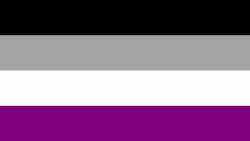Toronto Media Co-op
Local Independent News
Speaking at the Toronto Trans Pride Rally: My Experience
On Friday, I came out to the entire City of Toronto.
I came out as asexual. I came out as non-binary. I came out as a person of colour. Most importantly, I came out as all three at once at the Trans Pride Rally. Needless to say, it was not an easy thing to do.
I was asked to speak at the rally just two days before it was set to take place and I didn’t have a lot of time to decide whether I was going to speak, and even less time to determine how I would do it.
Although I am not an active member of the trans community in Toronto, I have friends who are, so I was tangentially aware of the complex internal politics surrounding the organization of the Trans Pride Rally and March. In the end, I decided to speak because I couldn’t alleviate any of the issues by not speaking, whereas I might be able to do good by speaking.
The majority of my LGBTQ-related involvement has been with the asexual, or ace, community and has focused on race. Although I did not know it at the time, I was the first-ever ace speaker at the Trans Pride Rally. Had I known that, I probably wouldn’t have spoken about race as much as I did, but in retrospect I am glad that I did.
Prior to writing my speech, I hadn’t done a huge amount of unpacking of my sexuality and race in relation to my gender identity. The same was true last year when I wrote a talk for a panel on asexuality and ethnicity at the WorldPride International Asexuality Conference, in which I discussed the relationship between performative whiteness and performative sexuality. I found that having to organize my thoughts like this is immensely helpful in terms of finding ways to articulate my experiences and feelings.
I started writing my speech. I didn’t know what I wanted to talk about, but as I worked through intersectional aspects of my identity, everything began to make sense. I remember more about writing the speech than I do about actually giving it. For me, it is the writing process that is empowering; giving the speech is a method by which I can try to transmit that empowerment to hopefully educate people and maybe even help them in navigating their own identities.
I discussed the pervasive whiteness of non-binary gender presentation and how that is linked to people of colour not being able to claim those identities for themselves. I talked about how perceived gender identity coupled with racial stereotypes influenced my experience of asexuality; as someone who is often perceived as an East Asian woman, I am automatically assumed to be submissive and quiet, desexualized characteristics that are often fetishized against my will. When that happens, I lose the ability to claim asexuality on my own terms, since it is that presumed asexuality that is connected to my race and perceived gender.
Several people came up to me afterwards and during the march to tell me that my words resonated with them. I’m pleased with that; their appreciation affirmed that I had made the right decision in choosing to speak, because if even a handful of people came away better informed or more secure in themselves, then my speech was a success.
The rally wasn’t perfect. One of the speakers said that an organizer threatened to quit if they spoke, and a longtime sex work organizer later wrote on Facebook that she was asked to speak and was then removed from the speaking list. There is evidently still work to be done in terms of inclusion and collaborative organizing in the Toronto trans community, and in other LGBTQ+ spaces.
One of the main points of my speech was that different marginalized groups are alienated from LGBTQ+ spaces and I discussed what that looked like as an ace, non-binary person of colour. If certain marginalized groups aren’t getting the representation they need, then the solution is to add that representation, and I think that my addition went some way to addressing the lack of ace, non-binary, and racialized voices in the LGBTQ+ community.
I spoke because I wanted to help empower other people and to share my experiences with others who may not have been aware of the issues that people like me face. I hope that the privilege to tell my story will be extended to other people from different intersecting marginalized groups next year.
About the poster
Sebastian Yūe (Sebastian Yūe)
Toronto
Member since June 2015
About:
Sebastian Yūe is a Toronto-based reporter. They grew up in Brighton, England, before moving to Canada to study English literature and modern languages at the University of Toronto. Sebastian is now completing their Master of Journalism at Ryerson University. When Sebastian isn't writing, they are probably watching Star Wars.Comments
i heard that GLBT is also
i heard that GLBT is also working at full pace with all the parades and all. hope all the hard work will pay at eventually.!
The site for the Toronto local of The Media Co-op has been archived and will no longer be updated. Please visit the main Media Co-op website to learn more about the organization.

